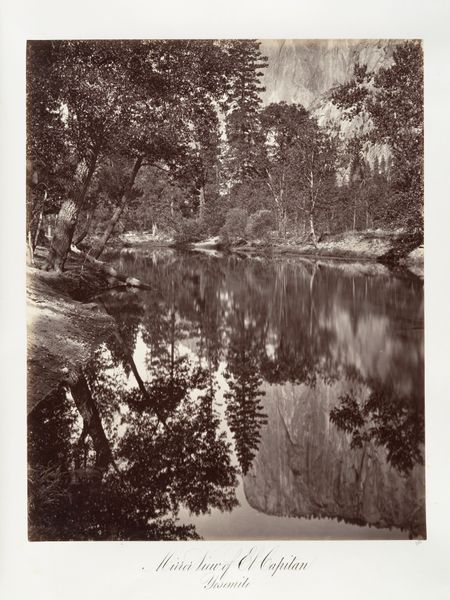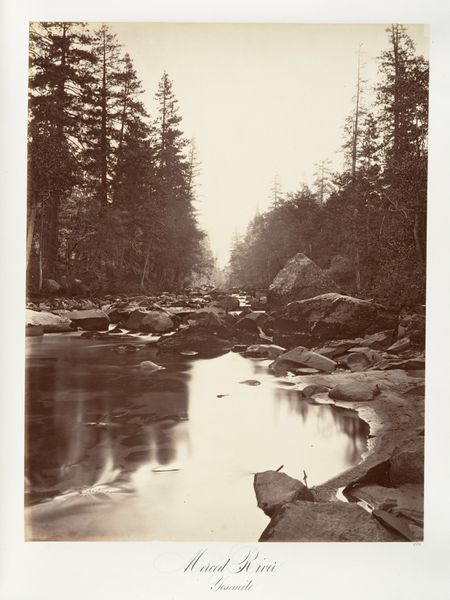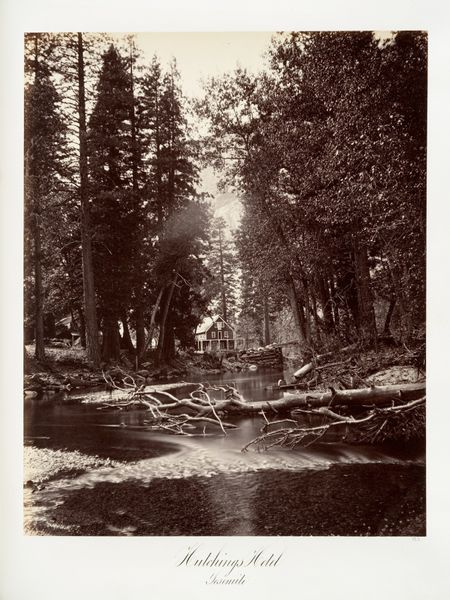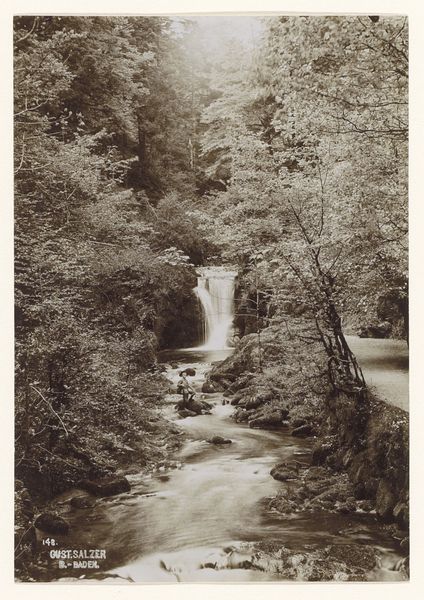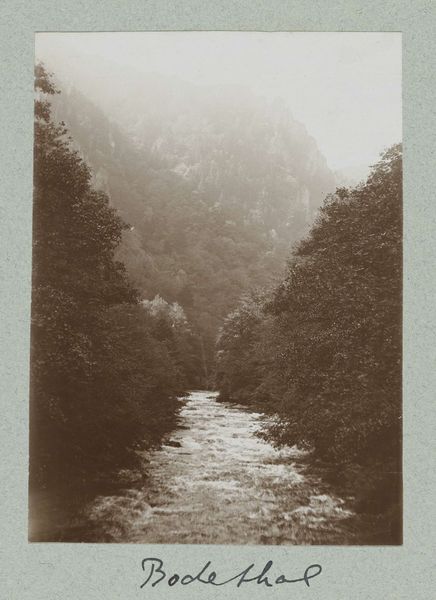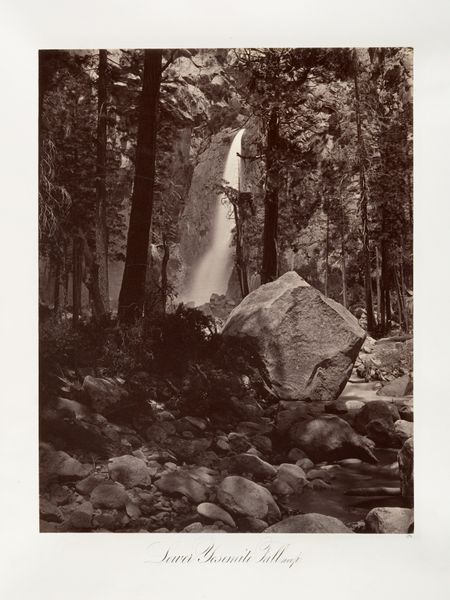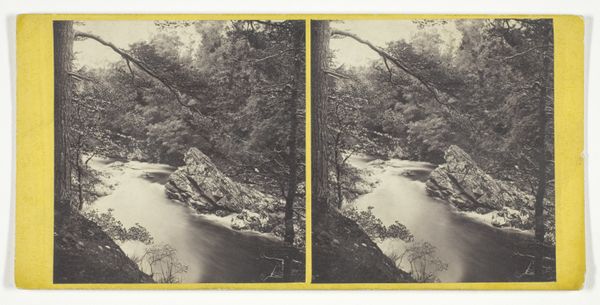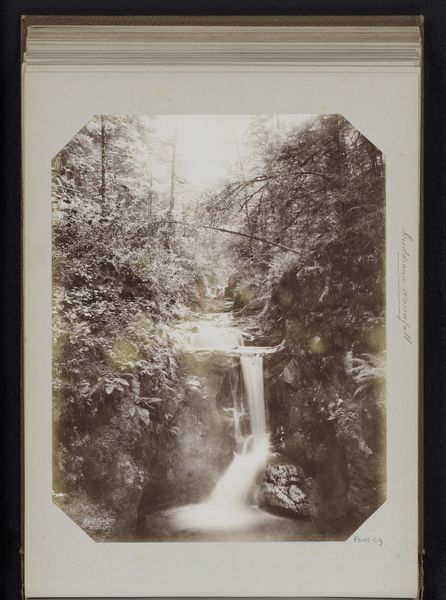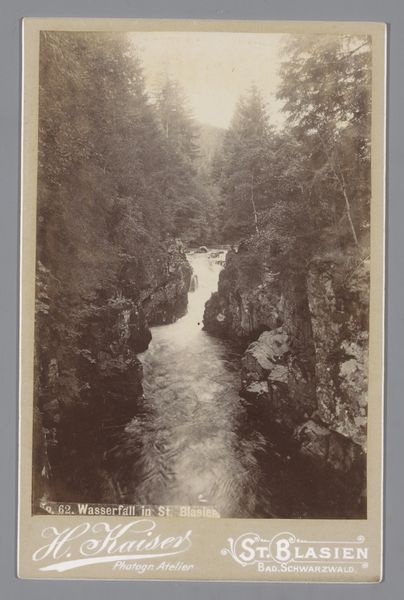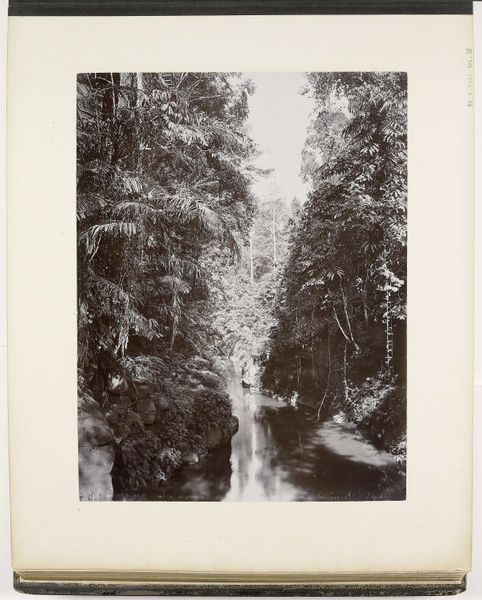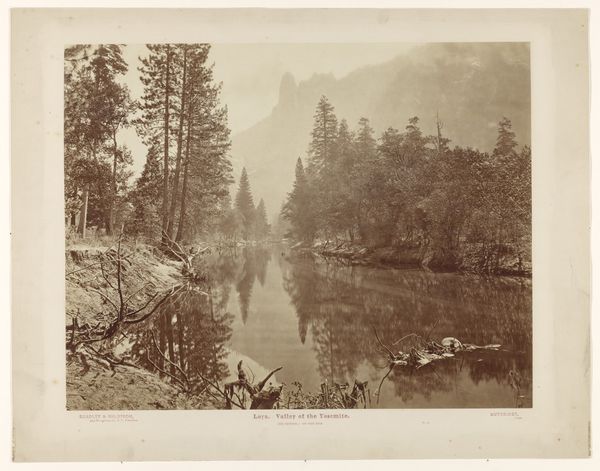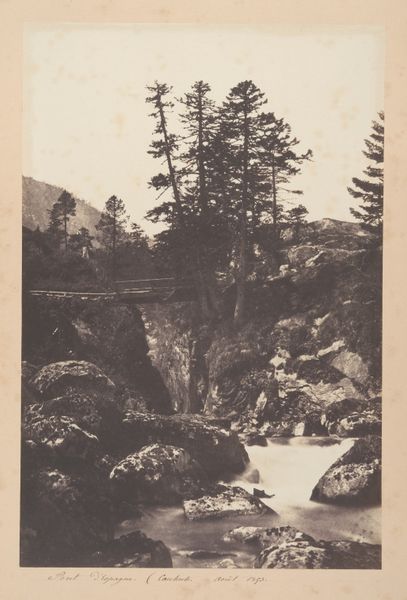
Copyright: Public Domain
Editor: This gelatin-silver print is called "Eagle Point, 4,000 feet, Yosemite," taken by Carleton Watkins between 1870 and 1874. I find the reflection of the trees in the water particularly striking, it gives a symmetrical feel to the image despite the rugged landscape. How do you interpret the formal elements at play here? Curator: Indeed, the photograph presents a compelling interplay of formal elements. Consider the tonal range: Watkins masterfully employs shades of grey, creating depth and texture. Notice how the darker, textured foreground gradually lightens towards the hazy, distant mountain. This creates a distinct recession into space. Also consider the strategic placement of the bridge; how does that structural form interrupt the natural lines of the landscape, and what does it convey? Editor: It definitely draws your eye, acting almost like a visual hinge between the wilderness and a man-made structure. Are you suggesting that it reveals a relationship between humanity and nature? Curator: Precisely. The formal contrast emphasizes the human imposition on the natural world, a subtle intrusion within the sublime. Observe how the verticality of the trees is echoed in the mountain’s form. What meaning can we extract from this resonance? Editor: I see it now! There's a dialogue between the natural elements. Perhaps that the wild landscape can overwhelm or subdue human touch? Curator: Indeed. Watkins creates visual rhythms and contrasts which suggest deeper structural relationships. Reflect on how these formal decisions contribute to the image’s overall effect, a testament to both the grandeur of nature and the intervention, and reflection, of man. Editor: I never would have noticed the intentional structure in what seemed to be a straightforward landscape. Thank you! Curator: The beauty lies in uncovering those layers. It’s a testament to Watkins' compositional skills and the power of close visual analysis.
Comments
No comments
Be the first to comment and join the conversation on the ultimate creative platform.
